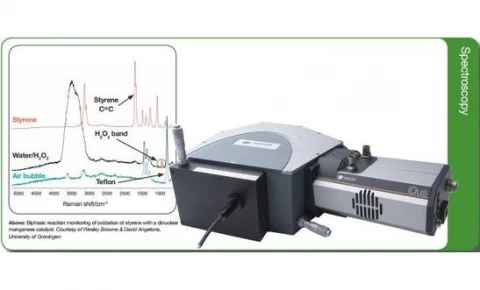Description
The Shamrock 163 is an innovative and compact research-grade Czerny-Turner spectrograph, designed to offer exceptional performance in a user-friendly format. With a focal length of 163 mm and a high aperture of F/3.6, this spectrograph stands out as the most compact option available for general benchtop spectroscopy measurements. Its design facilitates both horizontal and vertical mounting positions, offering unparalleled portability and ease of integration into various experimental setups.
This spectrograph is built on an imaging-configurable platform, making it ideal for multi-track spectroscopy. Its lens-based accessories are specially designed to optimize system performance, ensuring low cross-talk and enabling simultaneous acquisition of multi-leg fiber signals. The Shamrock 163 offers a wide range of interchangeable gratings, equipped with a simple precision locking mechanism that allows for seamless upgrades and adaptability to different research needs.
In addition to its versatile optical components, the Shamrock 163 features a variety of fixed slits, with laser-cut precision slits available in widths ranging from 10 µm to 200 μm. This flexibility extends to its light coupling interfaces, which include options for fiber-optics and C-mount microscope couplers, allowing for diverse experimental configurations. Furthermore, the calibrated micrometer drive ensures simple and rapid wavelength adjustment, enhancing the spectrograph's usability and precision in various analytical applications.
Overall, the Shamrock 163 is a powerful tool for researchers seeking a compact, adaptable, and high-performance spectrograph for a wide array of spectroscopy tasks. Its robust design and comprehensive configurability make it an excellent choice for both routine and advanced spectroscopic analysis.
Shamrock 163 Spectrograph - 300 lpmm 1200nm Blaze
Specifications
| Monochromator Type: | Czerny-Turner |
|---|---|
| Effective Focal Length: | 163 mm |
| Diffraction Grating: | 300 lines/mm |
| Grating Blaze Wavelength: | 1200 nm |
| Spectral Range: | 650 – 2000 nm |
| Linear Dispersion (Avg): | 18.21 nm/mm |
| Spectral Resolution (Avg): | 1.09 nm |
Features
- Compact & Rugged Design: The Shamrock 163 features a compact design that supports both horizontal and vertical mounting positions, ensuring portability and ease of integration into various setups.
- Imaging-Configurable Platform: Designed for multi-track spectroscopy, the Shamrock 163 allows for system performance optimization with lens-based accessories, enabling low cross-talk and simultaneous acquisition of multi-leg fiber signals.
- Interchangeable Gratings: Offers a wide range of gratings with a simple precision locking mechanism, allowing for seamless upgradability and adaptability to different spectral needs.
- Variety of Fixed Slits: Includes interchangeable laser-cut precision slits with widths ranging from 10 µm to 200 μm, providing flexibility for different resolution requirements.
- Versatile Light Coupling Interfaces: Features a large choice of light coupling interfaces, including fiber-optics and C-mount microscope couplers, enhancing compatibility with various experimental setups.
- Calibrated Micrometer Drive: Facilitates simple and rapid wavelength adjustment, ensuring precise and reliable wavelength selection for your experiments.
Applications
- Material Analysis: Utilize the Shamrock 163 for detailed material composition studies through spectroscopy.
- Environmental Monitoring: Monitor environmental samples for chemical composition and pollutants.
- Pharmaceutical Research: Analyze compounds and mixtures in drug development and quality control.
- Biological Studies: Conduct spectroscopic analysis of biological samples for research and diagnostics.
- Chemical Reaction Monitoring: Observe and analyze chemical reactions in real-time, such as the oxidation of styrene.
- Educational Demonstrations: Use in academic settings for teaching spectroscopy principles and techniques.
- Optical Component Testing: Evaluate the performance of optical components using spectral analysis.
- Raman Spectroscopy: Perform Raman shift analysis for molecular identification and characterization.
Frequently Asked Questions
How can the Shamrock 163 be customized?
What is the Shamrock 163 used for?
What are the interchangeable accessories available for the Shamrock 163?
What is the focal length of the Shamrock 163?
What is the aperture of the Shamrock 163?
Similar Products
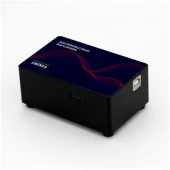

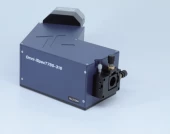
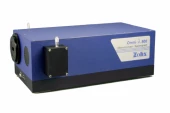


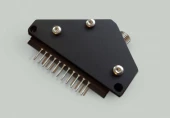

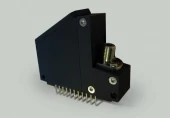
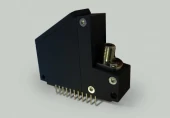
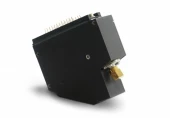
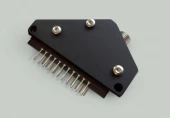
Your inquiry has been received.
Create an account by adding a password
Why create an account?
- Auto-complete inquiry forms
- View and manage all your past messages
- Save products to your favorites
- Close your account anytime — no hassle
